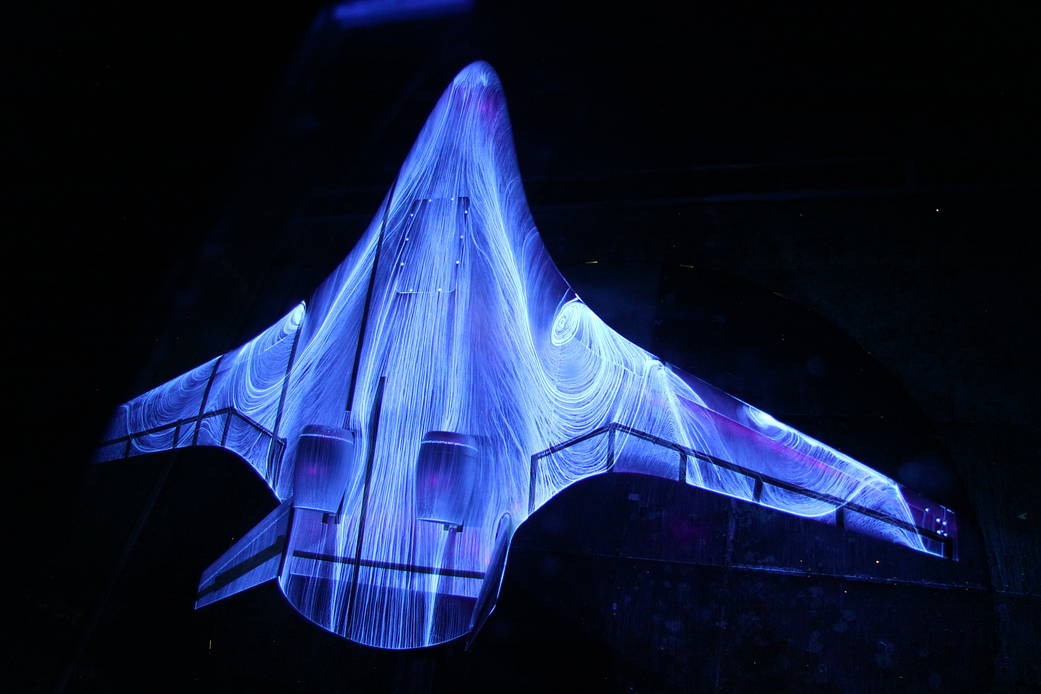Dec. 11, 2020, marks the 50th anniversary of NASA’s Langley Research Center’s 14×22 Subsonic Wind Tunnel.
The facility is used to assess aerodynamic performance of aircraft over a wide range of takeoff, landing, cruise, and high angle-of-attack conditions. It can provide acoustic, tethered free-flight, and forced-oscillation testing, motorsports research, aerodynamic material design studies and more.
The tunnel has been used by aircraft manufacturers, defense industry partners, the Department of Defense, and other government organizations. NASA projects have included researchers working space, science, exploration, and aeronautics programs in the continuing endeavor to achieve our NASA mission.
In this photo, engineers led by researcher Greg Gatlin have sprayed fluorescent oil on a 5.8 percent scale model of a futuristic hybrid wing body during tests in the tunnel. The oil helps researchers “see” the flow patterns when air passes over and around the model. Those patterns are important in determining crucial aircraft characteristics such as lift and drag.
Image Credit: NASA Langley/Preston Martin
2020年11月11日是NASA兰利研究中心14×22亚音速风洞的50周年纪念日。
该设备用于评估飞机在大范围起飞、着陆、巡航和高攻角条件下的空气动力学性能。它可以提供声学、系留自由飞行和强迫振动测试、赛车运动研究、空气动力学材料设计研究等。
该隧道已被飞机制造商、国防工业合作伙伴、国防部和其他政府组织使用。NASA的项目包括研究人员的工作空间,科学,探索和航空计划,以不断实现我们的NASA使命。
在这张照片中,由研究员格雷格·加特林(Greg Gatlin)领导的工程师在隧道内的测试过程中,在比例为5.8%的未来派混合机翼模型上喷了荧光油。当空气从模型上方和周围通过时,该荧光油可帮助研究人员“查看”流动模式。这些模式对于确定关键的飞机特性(例如升力和阻力)很重要。
图片来源:NASA Langley / Preston Martin







